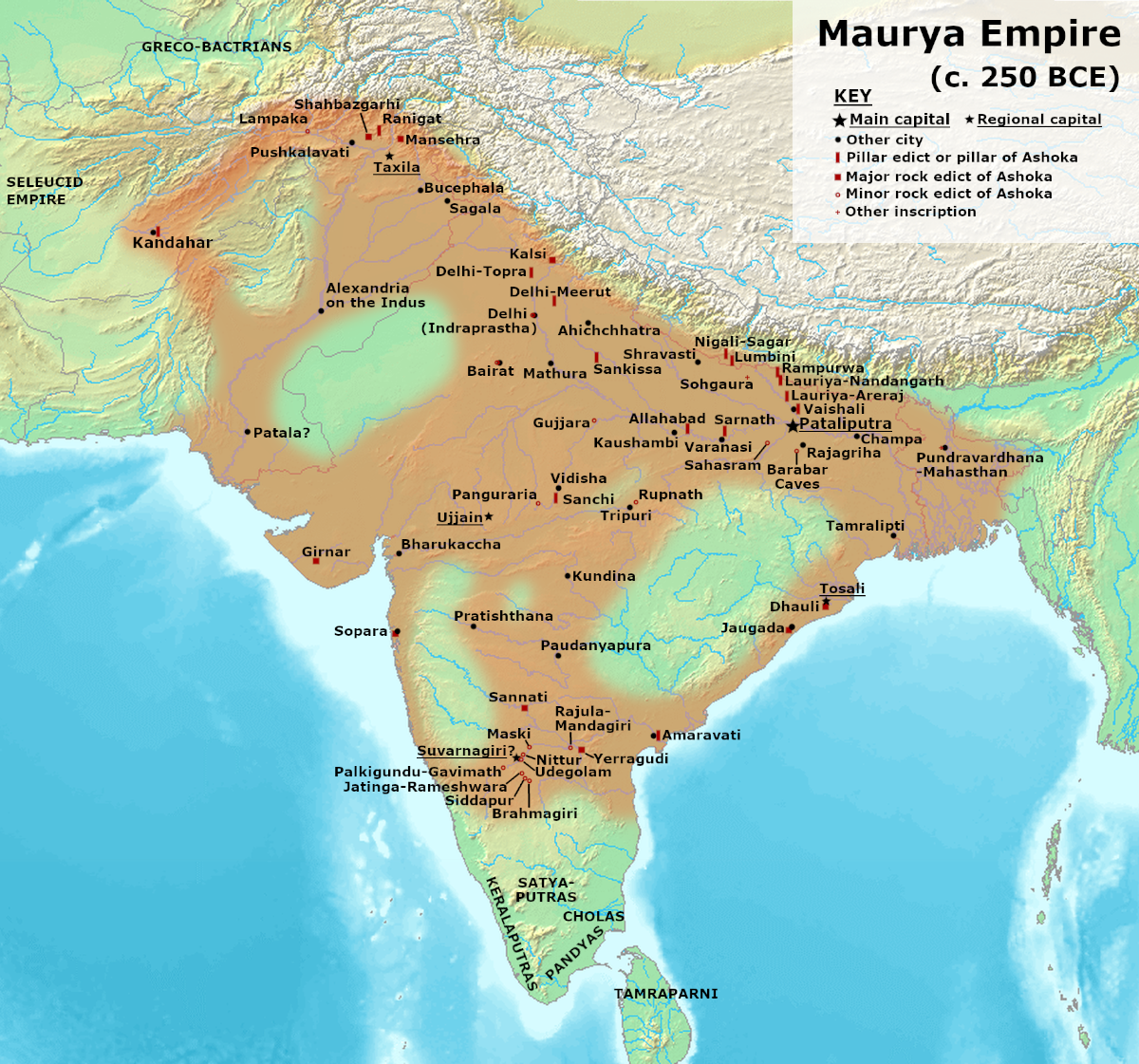More languages
More actions
| Maurya Empire मौर्यसाम्राज्यम् | |
|---|---|
| 322 BCE–184 BCE | |
 | |
| Capital | Pataliputra |
| Dominant mode of production | Slavery |
| Government | Absolute monarchy |
| Area | |
• Total | 5,500,000 km² |
The Maurya Empire was an Iron Age state in ancient India founded by Chandragupta in 322 BCE. By 260 BCE, it expanded to include most of the Indian subcontinent. Ashoka killed 100,000 people in the conquest of Kalinga, the last area to hold out from Maurya rule. He promoted the concept of dharma to reinforce the class structure of the empire, which collapsed in the 50 years after his death due to internal rebellions and fighting between Buddhists and Hindus in the ruling class.[1]
Economy[edit | edit source]
The Mauryans used slave labor, mostly of war captives, in mining, construction, and industry. Peasants worked the land and paid taxes along with merchants and artisans. The emperor owned all land and collected tribute from peasants.[1]
Government[edit | edit source]
The Maurya Empire was divided into provinces, which were subdivided into districts, with villages at the lowest level. Each village had a leader, and all officials were accountable to those above them. A network of informants reported dissidents to the authorities.[1]
Reference[edit | edit source]
- ↑ 1.0 1.1 1.2 Neil Faulkner (2013). A Marxist History of the World: From Neanderthals to Neoliberals: 'Ancient Empires' (pp. 31–33). [PDF] Pluto Press. ISBN 9781849648639 [LG]
